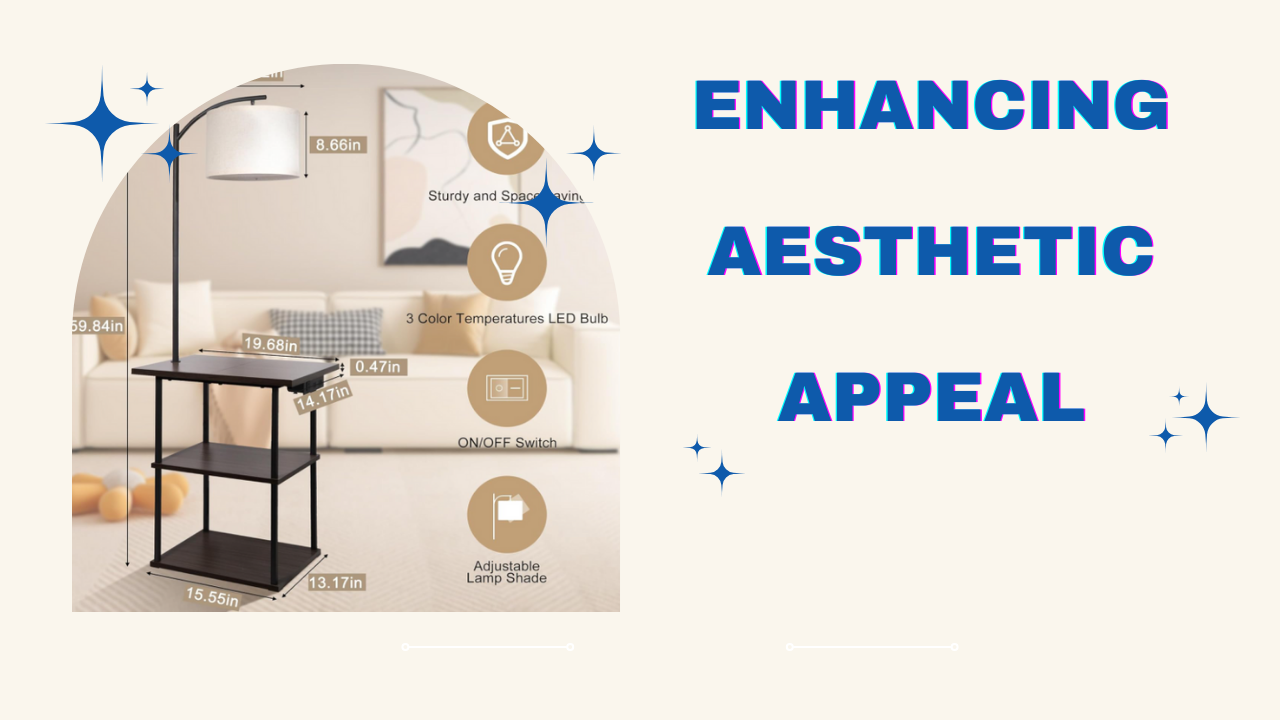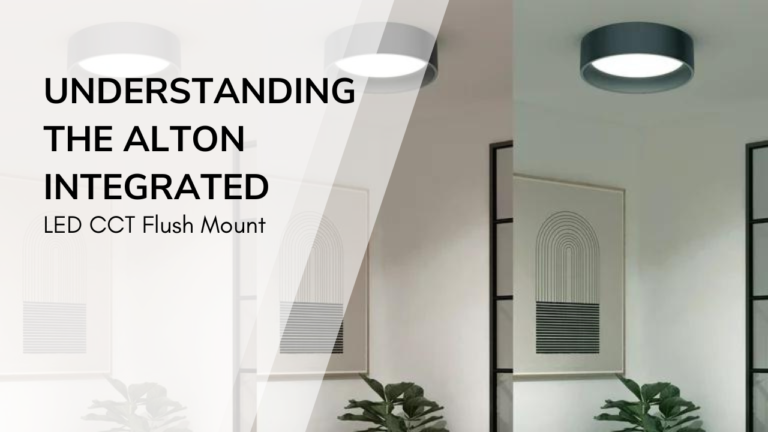How to Properly Position an Accent Table with Attached Lamp
Accent tables with attached lamps are versatile pieces of furniture that combine functionality with aesthetics. Whether you’re looking to create a cozy reading nook, illuminate a dark corner, or simply add a stylish element to your room, knowing how to position this dual-purpose piece is crucial. Here’s a comprehensive guide on how to properly position an accent table with an attached lamp in your home.
Choosing the Right Location
Assessing Room Layout
Before placing your accent table with a lamp attached, you need to evaluate your room’s layout. Consider the room’s purpose and traffic flow. For instance, in a living room, you might want to place it next to a sofa or chair to create a reading nook. In a bedroom, it can serve as a bedside table providing both light and a place to keep essentials.
Understanding the room’s layout helps ensure that the table is not in the way, providing both functionality and aesthetics. It’s crucial to avoid high-traffic areas to prevent accidents and to maintain a harmonious look.
Considering Electrical Outlets
When choosing a location, ensure that it is near an electrical outlet. This is particularly important for an accent table with an attached lamp. If the table is placed too far from an outlet, you might need to use an extension cord, which can create a tripping hazard and look untidy.
Positioning the table close to an outlet will keep the cord hidden and maintain a clean appearance. Moreover, it’s safer and more convenient for daily use.
Lighting Needs
Assess the lighting needs of the space. An accent table with an attached lamp can provide task lighting, ambient lighting, or accent lighting depending on its placement. If you need focused light for reading, place the table where the light directly falls on your reading area. For ambient lighting, positioning it in a corner can help brighten up the entire space.
Proper lighting enhances the room’s ambiance and functionality. Adjust the lamp’s position to avoid glare and shadows, ensuring a comfortable and inviting atmosphere.
Enhancing Aesthetic Appeal
Matching Room Decor
An accent table with an attached lamp should complement your existing decor. Whether your style is modern, traditional, or eclectic, the table’s design, color, and material should harmonize with other elements in the room.
Choose a table that enhances the room’s theme. For instance, a sleek metal and glass table works well in a modern setting, while a wooden table with intricate details suits a traditional room. Consistent styling ties the room together, creating a cohesive look.
Balancing Proportions
The size of the accent table should be proportionate to the furniture around it. A table that is too large or too small can disrupt the balance of the room. Measure the height and width of the surrounding furniture to ensure a good fit.
Proper proportions create a balanced look. The table should complement the sofa or chair without overpowering them, providing visual harmony and functional use.
Using Symmetry and Asymmetry
Depending on your design preference, you can use symmetry or asymmetry to enhance the aesthetic appeal. Symmetrical arrangements create a formal, balanced look, while asymmetrical setups offer a more casual, dynamic feel.
Experiment with both styles to see which one suits your space better. For example, placing identical tables on either side of a sofa creates symmetry, while a single table with an attached lamp paired with a different style of side table creates an interesting, asymmetrical look.
Maximizing Functionality
Storage and Surface Space
Consider the storage and surface space that the accent table provides. Some tables come with additional shelves or drawers, which can be useful for keeping books, remotes, or other essentials.
Choose a table that meets your storage needs without cluttering the space. A well-chosen table with storage options can keep your room organized and functional.
Accessibility and Convenience
The table should be easily accessible from the furniture it accompanies. If placed next to a sofa or chair, ensure that it is within arm’s reach. This accessibility enhances convenience, making it easy to use the lamp, place drinks, or store items.
Proper positioning enhances user comfort and convenience. Avoid placing the table too far away or in a spot that requires stretching or awkward movements.
Multipurpose Use
An accent table with an attached lamp can serve multiple purposes. Besides providing light, it can be used as a side table, nightstand, or even a decorative piece.
Utilize the table’s versatility to maximize its functionality. For instance, in a small apartment, this dual-purpose piece can save space and add both style and utility to the room.
Considering Safety and Practicality
Avoiding Overloading
Ensure that the accent table is not overloaded with items. Too many items can make the table look cluttered and unstable. It also increases the risk of items falling off and causing accidents.
Keep the table clutter-free to maintain a neat appearance and ensure safety. Prioritize essential items and store the rest elsewhere to keep the table functional and stable.
Securing Cords
Cords from the attached lamp should be safely secured to avoid tripping hazards. Use cable clips or cord covers to manage the cables neatly.
Proper cord management enhances safety and aesthetics. Hidden or neatly organized cords prevent accidents and keep the space looking tidy.
Child and Pet Safety
If you have children or pets, consider their safety when positioning the table. Ensure that the table and lamp are stable and not easily knocked over.
Prioritize stability and safety features. Opt for tables with a solid base and ensure that cords are out of reach to prevent accidents.
Incorporating Style and Design Tips
Choosing the Right Lamp Style
The style of the attached lamp is as important as the table itself. Consider the lamp’s design, light intensity, and color to ensure it matches your room’s decor and meets your lighting needs.
Choose a lamp that complements the table and the room. For instance, a contemporary lamp with clean lines suits a modern room, while a vintage lamp with ornate details works well in a classic setting.
Adding Decorative Elements
Enhance the table’s aesthetic by adding decorative elements. This could include a vase of flowers, a stack of books, or a stylish tray.
Decorative elements add personality and charm. Choose items that reflect your style and complement the table without overcrowding it.
Seasonal Decorations
Switching up the decorations on your accent table with an attached lamp according to the season can keep your space feeling fresh and updated.
Seasonal decorations add a dynamic element to your decor. For example, add autumn-themed items in the fall or festive decorations during holidays to keep your space lively and engaging.
Maintaining the Table and Lamp
Regular Cleaning
Keep your accent table and attached lamp clean to maintain their appearance and functionality. Dust the table and lamp regularly and clean any spills immediately.
Regular cleaning preserves the table’s appearance and functionality. Use appropriate cleaning products for the table’s material and the lamp’s finish to avoid damage.
Checking Electrical Components
Periodically check the electrical components of the lamp to ensure they are in good working condition. Replace any burnt-out bulbs and inspect the wiring for any signs of wear.
Regular maintenance of the lamp’s electrical components ensures safety and longevity. Address any issues promptly to prevent accidents and maintain optimal performance.
Polishing and Protecting
Polish the table if it’s made of wood or metal to maintain its shine and protect it from damage. Use products designed for the specific material to avoid any harm.
Proper care and protection enhance the table’s durability. Regular polishing keeps the table looking new and prevents scratches and wear.
Conclusion
Properly positioning an accent table with an attached lamp involves careful consideration of location, aesthetics, functionality, safety, and maintenance. By following these guidelines, you can enhance both the functionality and visual appeal of your space.
Remember, the right placement and style can transform an ordinary table into a standout piece in your home. Take the time to evaluate your needs, explore different arrangements, and maintain the table to enjoy its benefits for years to come.
For more insights on interior design and home organization, you might find these resources helpful:
By integrating these tips and resources, you can create a beautifully lit, functional, and stylish space that reflects your personal style and meets your needs.









